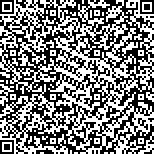| This article has been:Browse 1082Times Download 3019Times |

scan it! |
|
|
| DOI:10.13522/j.cnki.ggps.2022234 |
|
| Effect of Irrigation and Fertilization on Water and Nitrogen Dynamics in Soil of Wheat Field under Border Irrigation |
|
WANG Shunsheng, WU Chuang, LIU Tengfei, ZHANG Hao, LI Zhili
|
|
1. School of Water Conservancy, North China University of Water Resources and Electric Power, Zhengzhou 450046, China;
2. Provincial and Ministry Co-construction Collaborative Innovation Center for the Efficient Utilization of Water Resources, Zhengzhou 450046, China; 3. Rural Energy and Environment Agency of Shandong, Ji’nan 250023, China
|
| Abstract: |
| 【Objective】Bioavailable water and nutrients to crops depend not only on root architecture but also on how water and nitrogen fertilizer are applied. In this paper, we investigated the effects of irrigation and fertilization on water and nitrogen dynamics in soil of a winter wheat field under border irrigation.【Method】The experiment was conducted in a wheat field in Henan province, where changes in water and nitrogen in soil under border irrigation were measured. These data were used to validate the HYDRUS-1D model, and the validated model was then used to elucidate how a change in irrigation and fertilization modulates water and nitrogen dynamics in the root zone of wheat under border irrigation. 【Result】 The HYDRUS-1D model simulated water and nitrogen dynamics in the root zone well. The coefficient of determination (R2) between the simulated and measured data was greater than 0.84, with its associated RMSE and MAE less than 0.807 and 0.695, respectively. Increasing the low critical soil water content for resuming irrigation moved nitrate in the top 0~20 cm soil layer to 20~100 cm soil layer 1~2 days after the irrigation, but it did not show significant effects on ammonium dynamics in the soil. Increasing nitrogen fertilization increased nitrate and ammonium nitrogen in the 0~60 cm soil layer significantly, especially in the 0~40 cm soil, but reduced water content in the 0~40 cm soil layer. 【Conclusion】 The HYDRUS-1D model is able to simulate water and nitrogen movement in soil under border irrigation, and the simulated results can help to improve irrigation and fertilization management for wheat production in the studied and similar areas. |
| Key words: nitrogen distribution; distribution of soil water content; border irrigation; winter wheat; HYDRUS simulation |
|
|